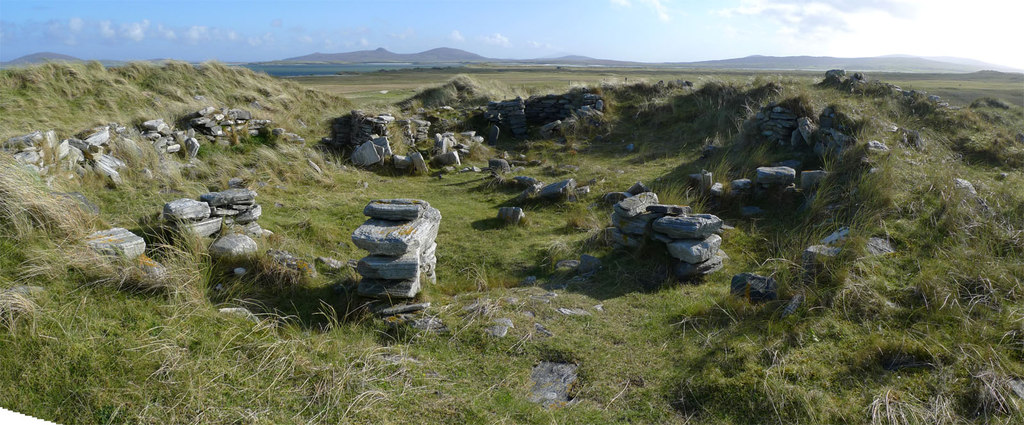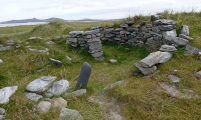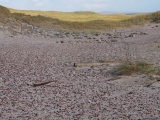<< Our Photo Pages >> Udal (Grenitote) - Ancient Village or Settlement in Scotland in North Uist
Submitted by Andy B on Sunday, 15 April 2012 Page Views: 9873
Multi-periodSite Name: Udal (Grenitote)Country: Scotland
NOTE: This site is 1.2 km away from the location you searched for.
County: North Uist Type: Ancient Village or Settlement
Nearest Village: Greinitobht
Map Ref: NF82387822
Latitude: 57.681274N Longitude: 7.331006W
Condition:
| 5 | Perfect |
| 4 | Almost Perfect |
| 3 | Reasonable but with some damage |
| 2 | Ruined but still recognisable as an ancient site |
| 1 | Pretty much destroyed, possibly visible as crop marks |
| 0 | No data. |
| -1 | Completely destroyed |
| 5 | Superb |
| 4 | Good |
| 3 | Ordinary |
| 2 | Not Good |
| 1 | Awful |
| 0 | No data. |
| 5 | Can be driven to, probably with disabled access |
| 4 | Short walk on a footpath |
| 3 | Requiring a bit more of a walk |
| 2 | A long walk |
| 1 | In the middle of nowhere, a nightmare to find |
| 0 | No data. |
| 5 | co-ordinates taken by GPS or official recorded co-ordinates |
| 4 | co-ordinates scaled from a detailed map |
| 3 | co-ordinates scaled from a bad map |
| 2 | co-ordinates of the nearest village |
| 1 | co-ordinates of the nearest town |
| 0 | no data |
Internal Links:
External Links:
I have visited· I would like to visit
DrewParsons would like to visit
SandyG visited on 25th Aug 2015 - their rating: Cond: 4 Amb: 5 Access: 1 Definitely a way from it all type of place in a stunning location.
Andy B have visited here

Some of the evidence at the site on North Uist was preserved by wind-blown sand dunes.
Archaeologist Ian Crawford excavated Udal between 1963 and 1995.
The earliest Neolithic layers he revealed consisted of a line of stones with a large upright stone nicknamed the great auk stone because of its resemblance to the extinct seabird.
A deep shaft containing quartz pebbles which had been covered over with a whale's vertebrae was also uncovered.
Evidence of a Viking longhouse and later occupation during the 1600s through to the 18th and 19th centuries were also found.
Source: BBC News
Note: Map reference given is for the Wheelhouse shown in the photos
Note: Grant for new research into Western Isles' sand dune-buried artefacts
You may be viewing yesterday's version of this page. To see the most up to date information please register for a free account.













Do not use the above information on other web sites or publications without permission of the contributor.
Click here to see more info for this site
Nearby sites
Key: Red: member's photo, Blue: 3rd party photo, Yellow: other image, Green: no photo - please go there and take one, Grey: site destroyed
Download sites to:
KML (Google Earth)
GPX (GPS waypoints)
CSV (Garmin/Navman)
CSV (Excel)
To unlock full downloads you need to sign up as a Contributory Member. Otherwise downloads are limited to 50 sites.
Turn off the page maps and other distractions
Nearby sites listing. In the following links * = Image available
3.3km S 181° Dun Toloman Stone Fort or Dun (NF82077492)
3.5km SSW 203° Dun Skellor Broch or Nuraghe (NF80757507)
3.7km SSW 214° Sollas, Machair Leathann Ancient Village or Settlement (NF80117533)
3.7km WSW 238° Leac nan Cailleacha Dubha Standing Stones (NF79087650)
4.3km WSW 237° Rudh' An Duin Stone Fort or Dun (NF7859376180)
4.9km ESE 120° Druim na h-Uamha earth house* Souterrain (Fogou, Earth House) (NF86457546)
5.7km WSW 243° Vallay (N Uist) Rock Art (NF77137600)
5.8km WSW 245° Bac Mic Connain Stone Fort or Dun (NF76947619)
5.9km ESE 108° Dun Rosail Stone Fort or Dun (NF87837595)
6.3km WSW 237° Geirisclett* Chambered Cairn (NF76847520)
6.3km WSW 239° Bac Mhic Connain Ancient Village or Settlement (NF76737537)
6.5km SW 228° Garry Iochdrach Ancient Village or Settlement (NF77237427)
6.5km SW 224° Eilean Maleit Ancient Village or Settlement (NF77487388)
6.6km E 95° Baile Mhic' Phàil Stone Setting* Cairn (NF88937711)
6.6km SE 138° Maari Standing Stone (Menhir) (NF864729)
6.7km SW 228° Cnoc A'Comhdhalach Ancient Village or Settlement (NF77087415)
6.8km E 84° Port nan Long Souterrain (Fogou, Earth House) (NF892784)
6.9km SW 232° Airigh Mhic Ruairidh* Stone Fort or Dun (NF76597440)
7.0km E 86° Crois Mhic Jamain* Stone Row / Alignment (NF89397820)
7.0km SSE 147° Barpa nam Feannag* Chambered Cairn (NF85687204)
7.3km E 90° Dun an Sticir* Broch or Nuraghe (NF897776)
7.7km E 95° Beinn A Chaolais Stone Circle (NF900770)
7.7km SW 223° Buaile Risary Cup Marked Stone Rock Art (NF76697293)
7.8km SW 223° Buaile Risary Wheelhouse Ancient Village or Settlement (NF76677291)
7.9km ESE 120° Dun Torcuill Stone Fort or Dun (NF8888573730)
View more nearby sites and additional images



 We would like to know more about this location. Please feel free to add a brief description and any relevant information in your own language.
We would like to know more about this location. Please feel free to add a brief description and any relevant information in your own language. Wir möchten mehr über diese Stätte erfahren. Bitte zögern Sie nicht, eine kurze Beschreibung und relevante Informationen in Deutsch hinzuzufügen.
Wir möchten mehr über diese Stätte erfahren. Bitte zögern Sie nicht, eine kurze Beschreibung und relevante Informationen in Deutsch hinzuzufügen. Nous aimerions en savoir encore un peu sur les lieux. S'il vous plaît n'hesitez pas à ajouter une courte description et tous les renseignements pertinents dans votre propre langue.
Nous aimerions en savoir encore un peu sur les lieux. S'il vous plaît n'hesitez pas à ajouter une courte description et tous les renseignements pertinents dans votre propre langue. Quisieramos informarnos un poco más de las lugares. No dude en añadir una breve descripción y otros datos relevantes en su propio idioma.
Quisieramos informarnos un poco más de las lugares. No dude en añadir una breve descripción y otros datos relevantes en su propio idioma.